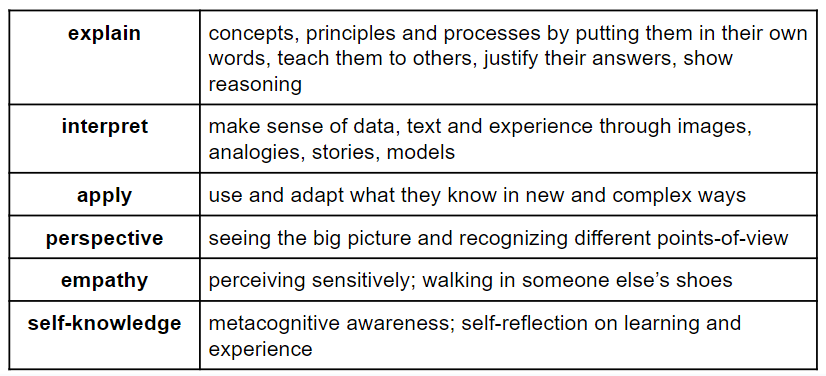Welcome to this 2-part series, where we delve into the art of teaching for understanding. In an era characterized by information overload, it is imperative for educators to shift their focus from merely transmitting knowledge to facilitating genuine comprehension. This paradigm shift not only enhances academic achievement but also equips students with the skills needed for success in an ever-evolving world. Read on as we explore the principles (Part 1) and practices (Part 2) of teaching for understanding!
What is “understanding”?
Let’s try a mental exercise! (You can also try this with your students!)
Think about something you deeply understand, such as the subject you teach or a hobby. Now, think about the ways your understanding is shown. How would others know that you have that understanding? Given your understanding, what can YOU do that a person WITHOUT that understanding cannot?
Understanding defined
In their book, Teaching for Deeper Learning: Tools to Engage Students in Meaning Making, Authors McTigue and Silver emphasize that understanding is constructed through meaning-making or the active manipulation of content while using higher-order thinking skills. The thinking skills that lead to understanding are:
Why teach for understanding?
Essential skills for success in the 21st-century workplace are centered around creativity, innovation, collaboration, communication, and problem-solving. Merely focusing on the acquisition of knowledge and memorization of facts is no longer sufficient. There exists a critical need for a deeper understanding of the world, coupled with the ability to locate, organize, assess, and apply information in novel situations.
The knowledge base across various fields is expanding at an unprecedented rate. Therefore, there is a pressing need to transition from the traditional approach of ‘content coverage’ to a more dynamic ‘uncoverage’ strategy that emphasizes the exploration of crucial transferable ideas.
Over the past two to three decades, advancements in cognitive psychology and neuroscience have significantly broadened our insights into how individuals learn. This paradigm shift encourages a move away from mere drill and practice towards fostering understanding and practical application. Rote learning is now recognized as an ineffective method for knowledge transfer.
The 6 facets of understanding
McTigue & Silver (2020) present us with six different facets of understanding that are shown in the table below. These require our students to engage in various higher-order thinking processes. For instance, when we ask our students to explain, they are paraphrasing what they know about a topic or a concept by teaching it to others or justifying their answers. On the other hand, showing understanding through perspective-taking means that students have to recognize different points-of-view. The last facet, self-knowledge, enters into the area of metacognition, where a student is using self-reflection skills to understand their learning experience.

To conclude Part 1 …
We want to restate that teaching for understanding is not just an educational strategy; it’s a transformative philosophy that empowers students to navigate the complexities of the modern world!
In Part 2 we will explore the practical aspects of teaching for understanding, such as framing learning around big ideas, engaging our learners in meaning-making and teaching and assessing for transfer.
Stay tuned!

